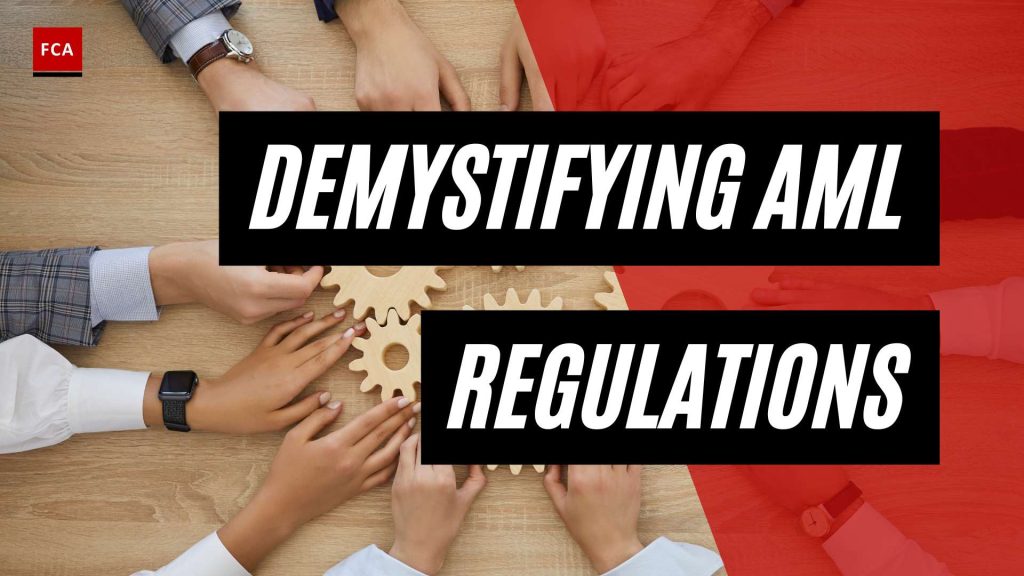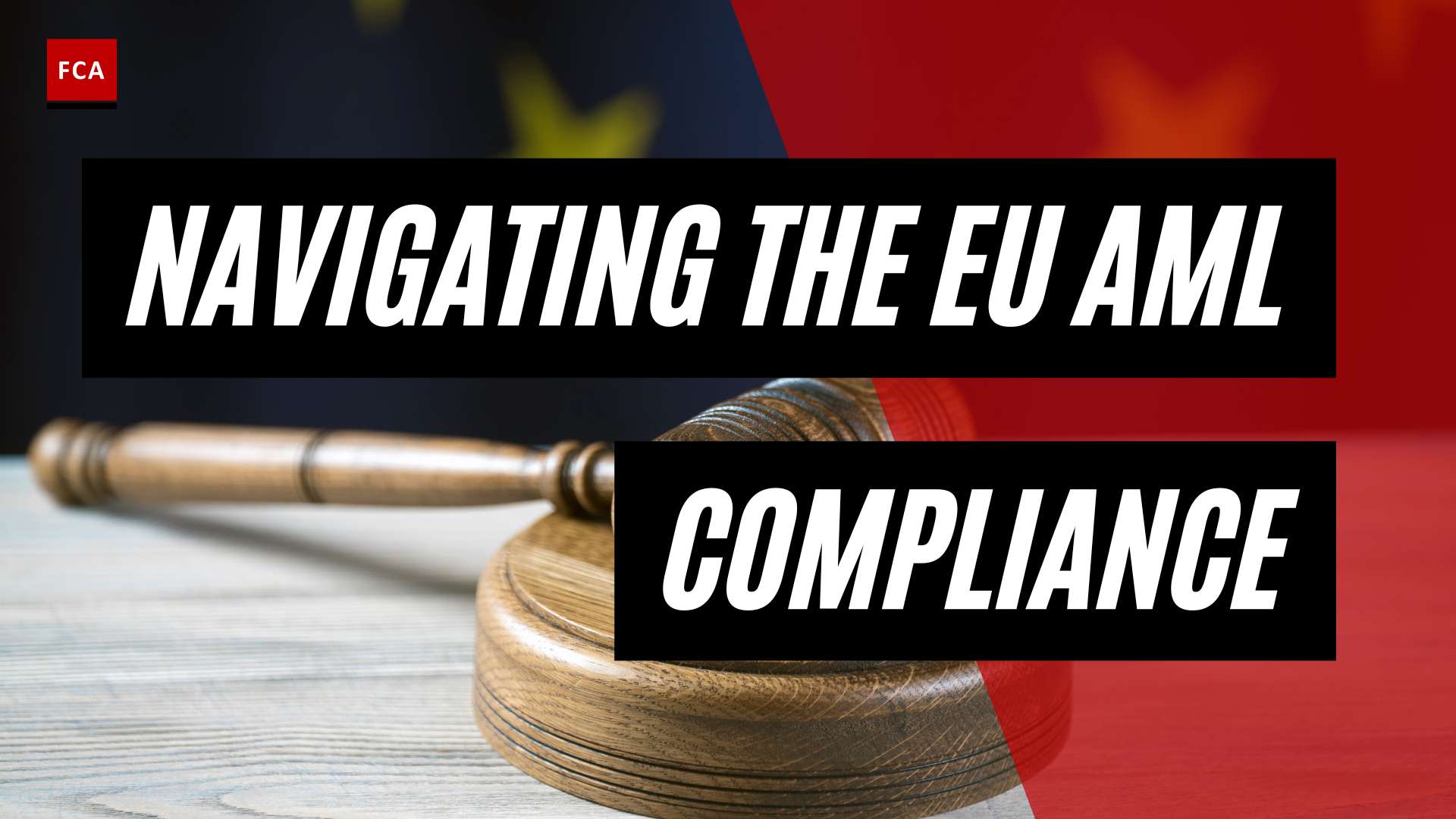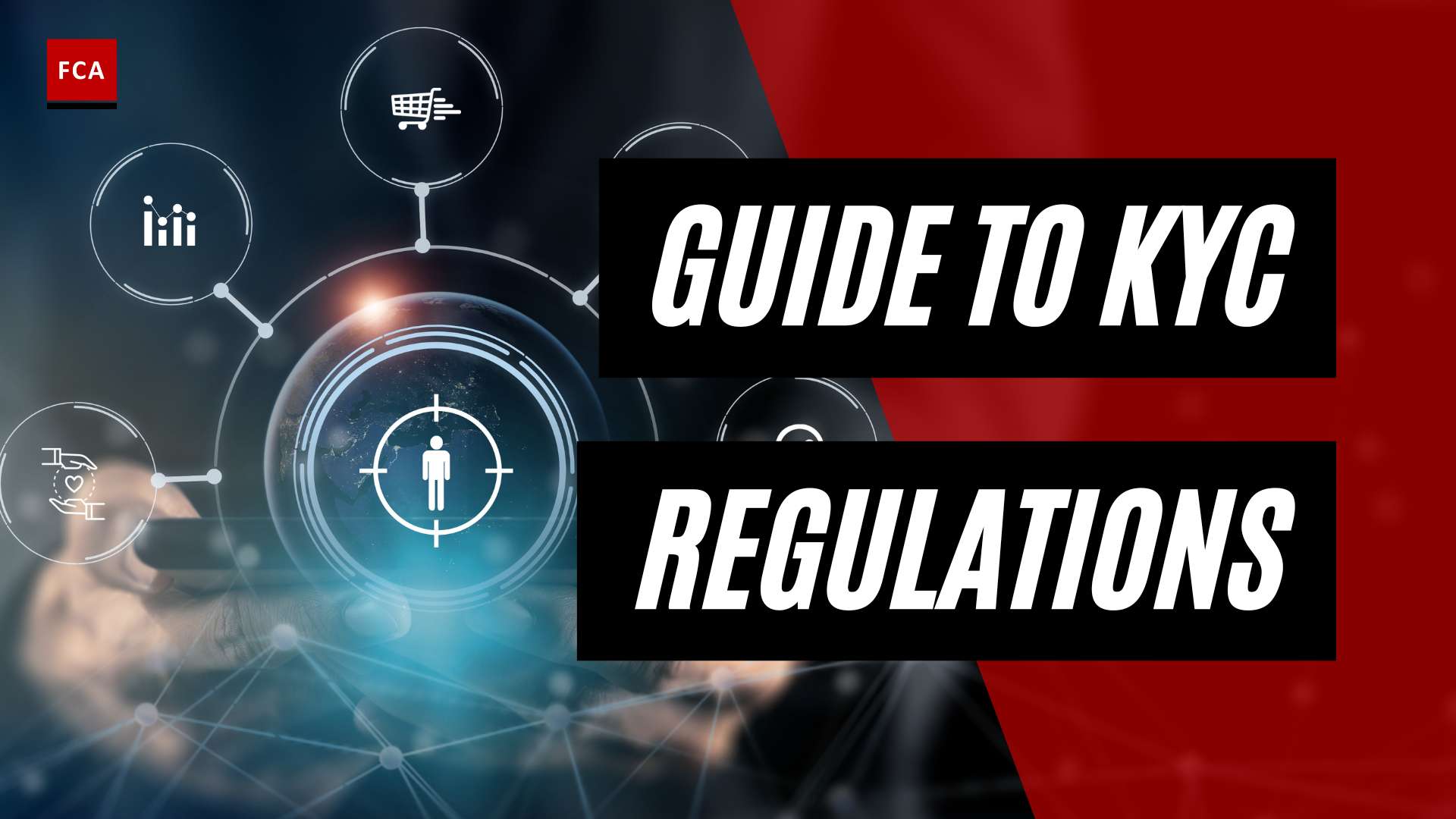Understanding AML Regulations
In the world of finance, Anti-Money Laundering (AML) regulations play a vital role in combating financial crimes. Understanding the principles and requirements of AML regulations is essential for professionals working in compliance, risk management, anti-money laundering, and anti-financial crime. This section will provide an overview of AML regulations, including its definition, importance, and the regulatory framework surrounding it.
What is Anti-Money Laundering (AML)?
Anti-Money Laundering (AML) refers to a set of laws, regulations, and procedures designed to prevent the illegal process of concealing the origins of illicitly obtained funds. Money laundering involves making illegally obtained money appear legitimate by passing it through a series of complex transactions. The primary objective of AML regulations is to deter and detect money laundering activities, as well as combat other financial crimes such as terrorist financing, fraud, and corruption.
The Importance of AML Regulations
AML regulations play a crucial role in maintaining the integrity of financial systems and preventing illicit activities from infiltrating legitimate channels. By implementing AML regulations, governments, financial institutions, and other entities aim to protect the global economy, maintain the stability of financial systems, and safeguard the reputation of the financial industry.
The consequences of failing to comply with AML regulations can be severe. Financial institutions may face legal penalties, reputational damage, loss of customer trust, and regulatory intervention. Compliance with AML regulations is not only a legal obligation but also a responsibility towards ensuring the integrity of the financial system.
Overview of AML Regulatory Framework
The AML regulatory framework consists of laws, regulations, and guidelines established by governmental and regulatory bodies to combat money laundering and other financial crimes. The framework varies across jurisdictions but generally includes several key components:
| Regulatory Component | Description |
|---|---|
| Legal Framework | AML regulations are typically enacted through legislation or statutes that define money laundering offenses, prescribe penalties, and establish regulatory authorities. |
| Regulatory Authorities | Governmental bodies, such as financial intelligence units, central banks, and regulatory agencies, are responsible for enforcing AML regulations and supervising compliance by financial institutions. |
| Customer Due Diligence (CDD) | Financial institutions are required to identify and verify the identities of their customers, assess their risk profiles, and monitor their transactions to detect suspicious activity. For more information on CDD, refer to our article on customer due diligence. |
| Know Your Customer (KYC) | KYC procedures involve gathering information about customers’ identities, sources of funds, and the nature of their business relationships. KYC helps identify and manage the risk of potential money laundering or terrorist financing activities. |
| Suspicious Activity Reporting (SAR) | Financial institutions are obligated to report any suspicious transactions or activities to the relevant authorities. SARs serve as a crucial mechanism for detecting potential money laundering or illicit financing activities. To learn more about SAR, visit our article on suspicious activity reporting. |
| Record Keeping | Financial institutions must maintain appropriate records of customer information, transactions, and due diligence measures. These records are essential for audits, investigations, and regulatory compliance purposes. |
| Training and Education | AML regulations often require financial institutions to provide training and education to their employees to enhance their awareness and understanding of money laundering risks and detection methods. |
Understanding the basics of AML regulations is paramount for professionals in the financial industry. Compliance with AML regulations helps protect against financial crimes, maintain the integrity of the financial system, and contribute to global efforts in combating money laundering.
Key Components of AML Regulations
To effectively combat money laundering and other financial crimes, Anti-Money Laundering (AML) regulations encompass several key components. These components are crucial for financial institutions and other regulated entities to implement robust compliance measures. The key components of AML regulations include Customer Due Diligence (CDD), Know Your Customer (KYC), and Suspicious Activity Reporting (SAR).
Customer Due Diligence (CDD)
Customer Due Diligence (CDD) is a fundamental aspect of AML regulations. It involves conducting a thorough assessment of the customer’s identity, business activities, and risk profile. The purpose of CDD is to understand the nature and purpose of the customer relationship to detect and prevent money laundering and other illicit activities.
During the CDD process, financial institutions are required to collect and verify customer information, such as their name, address, identification documents, and beneficial ownership details. This information helps in assessing the customer’s risk profile and identifying any potential red flags or suspicious activities.
It’s important for institutions to establish risk-based CDD procedures based on the level of risk associated with different types of customers and transactions. By implementing robust CDD measures, institutions can better identify and manage the risks posed by their customers.
Know Your Customer (KYC)
Know Your Customer (KYC) is closely related to CDD and involves verifying the identity of customers to mitigate the risk of financial crimes. KYC procedures require financial institutions to obtain sufficient information about their customers to have a clear understanding of their identity, financial activities, and risk profile.
KYC procedures typically involve collecting and verifying various types of information, including personal identification details, proof of address, occupation, source of funds, and purpose of the relationship. This information helps to establish the legitimacy of the customer’s transactions and identify any unusual or suspicious activities.
Financial institutions are responsible for conducting ongoing monitoring of customer accounts to ensure that the information remains up to date and any changes are promptly identified and verified. By adhering to robust KYC procedures, institutions can enhance their ability to detect and prevent money laundering and other illicit activities.
Suspicious Activity Reporting (SAR)
Suspicious Activity Reporting (SAR) is a critical element of AML regulations, requiring financial institutions to report any transactions or activities that raise suspicion of money laundering or other financial crimes. SAR plays a crucial role in the early detection and prevention of illicit activities, as it enables the sharing of information with relevant authorities and facilitates investigations.
Financial institutions are required to establish internal systems and processes to monitor customer transactions and identify any unusual or suspicious activities. When suspicious activities are identified, institutions must file a SAR with the appropriate regulatory authorities, providing detailed information about the suspicious activity and the parties involved.
SARs are an essential tool for combating money laundering and financial crimes, as they contribute to the collective efforts of authorities in identifying and investigating suspicious activities. By promptly reporting suspicious activities, financial institutions contribute to the overall integrity of the financial system.
Understanding and implementing these key components of AML regulations is crucial for financial institutions and other regulated entities. By adhering to robust CDD and KYC procedures, and promptly reporting suspicious activities through SARs, institutions can enhance their ability to protect against money laundering and other financial crimes.
AML Compliance and Financial Privacy
Ensuring compliance with Anti-Money Laundering (AML) regulations is crucial for financial institutions and businesses to prevent financial crimes. However, it is equally important to balance AML compliance with customer privacy and protect their financial information. This section explores the delicate balance between AML compliance and financial privacy, the impact of AML regulations on customer privacy, and the measures taken to safeguard customer data.
Balancing AML Compliance and Customer Privacy
AML compliance and customer privacy are two essential aspects that financial institutions must navigate carefully. While AML regulations require robust measures to detect and prevent money laundering and other financial crimes, they should not compromise the privacy of customers. Striking the right balance is crucial to maintain confidence in the financial system and protect individual rights.
To achieve this balance, financial institutions must implement strong data protection measures and ensure that customer information is handled securely. This involves establishing strict access controls, encrypting sensitive data, and regularly monitoring and auditing data handling processes. Additionally, financial institutions should provide clear privacy policies to customers, informing them of how their data is collected, used, and protected.
Impact of AML Regulations on Financial Privacy
AML regulations have had a significant impact on financial privacy. To comply with these regulations, financial institutions are required to collect and verify customer information through processes such as Customer Due Diligence (CDD) and Know Your Customer (KYC). These processes involve gathering personal data, such as identification documents and financial information, to ensure the legitimacy of customer transactions.
While these measures are crucial for detecting and deterring financial crimes, they do involve the collection and processing of personal data. Therefore, it is essential for financial institutions to handle this data responsibly, ensuring compliance with data protection laws and regulations. By implementing stringent security measures and maintaining transparency with customers regarding data handling practices, financial institutions can mitigate the impact on financial privacy.
Safeguarding Customer Data
Safeguarding customer data is of utmost importance when it comes to AML compliance and financial privacy. Financial institutions must implement robust security measures to protect customer information from unauthorized access, data breaches, and other threats.
Some key measures to safeguard customer data include:
-
Data Encryption: Encrypting customer data both in transit and at rest can help protect it from unauthorized access.
-
Access Controls: Implementing strict access controls ensures that only authorized individuals can access customer data.
-
Secure Storage: Storing customer data in secure and encrypted databases or servers reduces the risk of data breaches.
-
Regular Audits: Conducting regular audits and assessments of data handling processes helps identify vulnerabilities and ensure compliance with data protection requirements.
-
Employee Training: Providing comprehensive training to employees on data protection and privacy practices helps maintain a culture of security and compliance.
By implementing these measures, financial institutions can safeguard customer data while meeting their AML compliance obligations.
In conclusion, balancing AML compliance with customer privacy is a critical challenge for financial institutions. While AML regulations have an impact on financial privacy, it is essential to protect customer data through stringent security measures and transparent data handling practices. By striking the right balance and prioritizing both compliance and privacy, financial institutions can effectively combat financial crimes while maintaining customer trust and confidence in the financial system.
AML Compliance Challenges
Implementing effective Anti-Money Laundering (AML) measures is crucial for financial institutions to protect themselves against financial crimes. However, achieving and maintaining AML compliance can be challenging due to various factors. This section explores some of the key challenges faced by organizations when it comes to AML compliance.
Keeping Up with Evolving AML Regulations
One of the greatest challenges in AML compliance is keeping up with the constantly evolving regulations and guidelines. Regulatory bodies regularly update and modify AML regulations to adapt to emerging risks and changing financial landscapes. Staying abreast of these changes requires a dedicated effort to monitor and understand regulatory updates, ensuring that compliance programs remain up to date.
To address this challenge, organizations need to establish robust processes for monitoring and analyzing regulatory changes. This involves closely following regulatory announcements, participating in industry forums, and leveraging technology solutions that provide real-time updates on regulatory developments. Collaboration and information sharing within the organization and with industry peers can also help in understanding and implementing the latest AML requirements.
Identifying and Mitigating Risks
Another significant challenge in AML compliance is effectively identifying and mitigating risks associated with money laundering and other financial crimes. AML risk assessments play a crucial role in identifying vulnerabilities within an organization and developing appropriate risk mitigation strategies.
Conducting comprehensive risk assessments involves analyzing customer profiles, transaction patterns, and geographic factors to identify potential red flags. It requires a deep understanding of the organization’s business activities, as well as knowledge of typologies and indicators of suspicious activity. Regular risk assessments help organizations prioritize their resources and focus on areas that pose the highest risk.
To address this challenge, organizations should invest in robust risk assessment methodologies and tools. This includes leveraging technology solutions that use advanced analytics and machine learning to identify patterns and anomalies indicative of potential money laundering activity. Regular training and education on emerging risks and typologies are also essential for frontline staff and compliance professionals to enhance their risk identification capabilities.
Training and Education for AML Compliance
Ensuring that employees have sufficient knowledge and understanding of AML regulations and their responsibilities is another challenge in AML compliance. Effective training and education programs are essential to equip employees with the necessary skills to detect and report suspicious activity.
Organizations should provide regular AML training to employees at all levels, including frontline staff, management, and compliance personnel. This training should cover topics such as customer due diligence (CDD), suspicious activity reporting, and the importance of adhering to AML regulations. Training programs should be tailored to the specific roles and responsibilities of employees and should be updated to reflect regulatory changes and emerging risks.
In addition to training, organizations should foster a culture of compliance by promoting awareness and accountability throughout the organization. This includes designating an AML compliance officer, establishing clear reporting channels for suspicious activity, and conducting periodic assessments to ensure ongoing compliance.
By addressing the challenges of keeping up with evolving regulations, identifying and mitigating risks, and providing comprehensive training and education, organizations can enhance their AML compliance efforts. Implementing effective AML compliance programs and staying proactive in the face of regulatory changes will help organizations protect themselves against financial crimes and promote a safer financial ecosystem.
Best Practices for AML Compliance
To effectively combat money laundering and protect against financial crimes, organizations must implement robust Anti-Money Laundering (AML) compliance programs. Here are some best practices to consider:
Implementing Effective AML Compliance Programs
Developing and maintaining a comprehensive AML compliance program is vital for organizations operating in regulated industries. Such programs should include the following key elements:
-
Policies and Procedures: Establish clear policies and procedures that outline the organization’s commitment to AML compliance. These should encompass customer due diligence (CDD), know your customer (KYC) requirements, and suspicious activity reporting (SAR). Regularly review and update these policies to reflect changing regulations and emerging risks.
-
Governance and Oversight: Designate an AML compliance officer or team responsible for overseeing and implementing the AML compliance program. This ensures accountability and centralizes compliance efforts. The compliance officer should have the authority and resources necessary to enforce the program effectively.
-
Training and Education: Provide regular training to employees on AML regulations, emerging threats, and the organization’s compliance program. This helps employees understand their role in detecting and preventing money laundering activities. Training should be tailored to different roles and responsibilities within the organization.
-
Risk Assessment: Conduct ongoing risk assessments to identify and evaluate potential money laundering risks specific to the organization’s operations. Assessments should consider factors such as customer types, geographic locations, products, and services offered. Use the insights gained from risk assessments to inform the development and enhancement of AML controls.
-
Internal Controls and Monitoring: Implement internal controls and monitoring systems to detect and report suspicious activities. These controls should include transaction monitoring, customer screening against sanctions lists and politically exposed person (PEP) lists, and regular reviews of customer activity. Regularly assess the effectiveness of these controls and make necessary adjustments.
Conducting Ongoing Risk Assessments
AML compliance is an ongoing effort that requires organizations to stay vigilant and adaptive to evolving risks. Conducting regular risk assessments helps identify and mitigate potential vulnerabilities. Key considerations for conducting risk assessments include:
-
Customer Risk Profiles: Assess the risk associated with different customer types, such as high-net-worth individuals, politically exposed persons (PEPs), and entities operating in high-risk jurisdictions. This evaluation enables organizations to allocate resources and implement appropriate controls based on risk levels.
-
Product and Service Risk: Evaluate the risk associated with specific products and services offered by the organization. Certain products, such as anonymous prepaid cards or online payment systems, may present higher money laundering risks. Implement controls tailored to mitigate these risks effectively.
-
Geographic Risk: Consider the geographic locations in which the organization operates or conducts business. Assess the level of money laundering risk associated with these locations, taking into account factors such as corruption levels, regulatory frameworks, and crime rates.
Collaboration and Information Sharing
Collaboration and information sharing among industry peers, regulatory bodies, and law enforcement agencies are crucial for effective AML compliance. By sharing knowledge and experiences, organizations can collectively strengthen their defenses against financial crimes. Consider the following practices:
-
Industry Associations and Networks: Engage with industry associations and participate in AML-focused forums or working groups. These platforms provide opportunities to share best practices, discuss emerging trends, and learn from peers facing similar challenges.
-
Regulatory Guidance and Updates: Stay informed about AML regulatory developments and guidance issued by relevant regulatory bodies. Regularly review regulatory updates to ensure compliance with the latest requirements.
-
Suspicious Activity Reporting: Establish a robust process for reporting suspicious activities to the appropriate authorities. This not only helps in combating money laundering but also contributes to the broader anti-financial crime efforts. Refer to our article on suspicious activity reporting for more information.
By implementing effective AML compliance programs, conducting ongoing risk assessments, and fostering collaboration, organizations can proactively protect themselves against financial crimes and contribute to a more secure financial system.








